Perp DEX vs. Spot DEX: What’s the Difference?
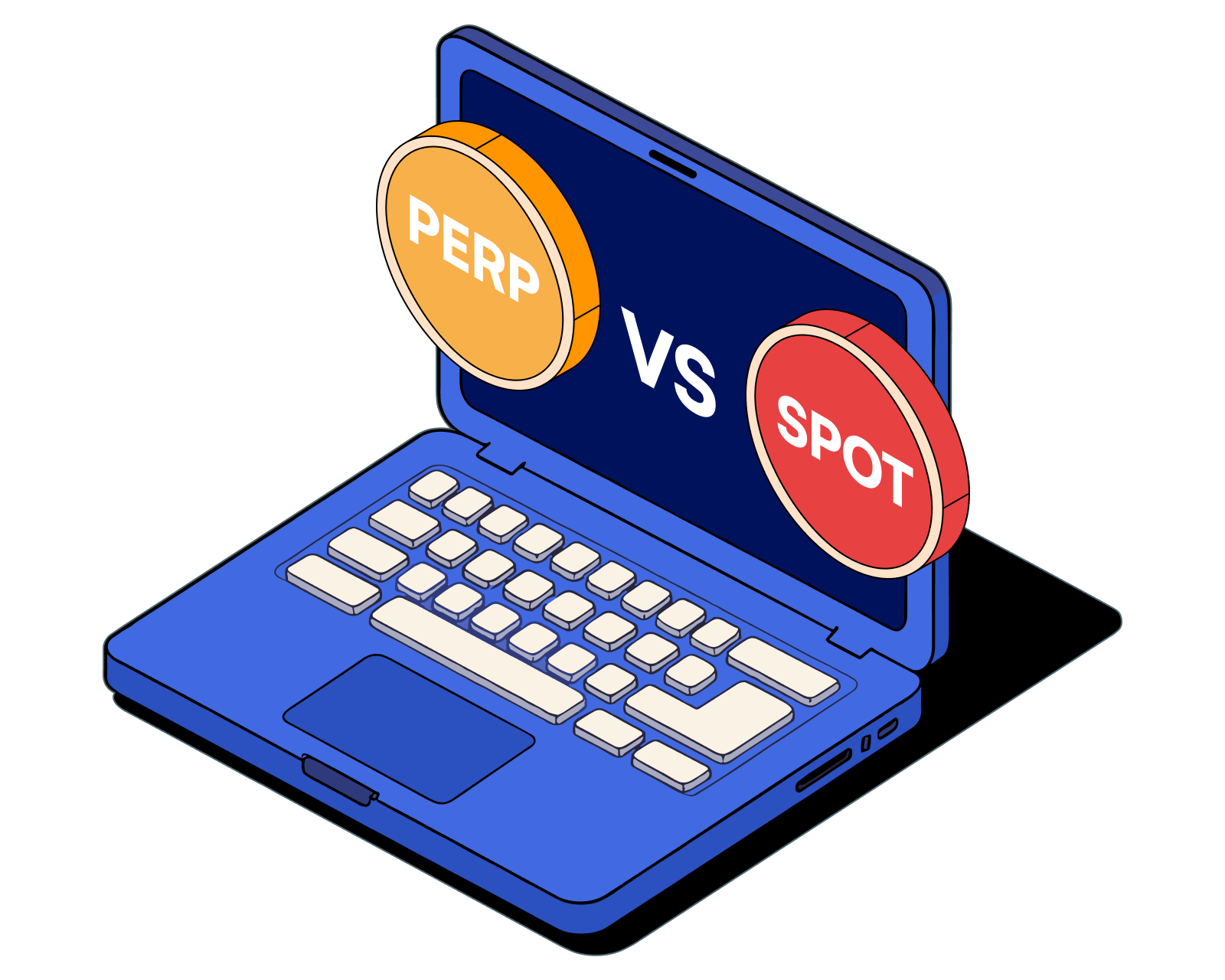
Table of Contents
A Perp DEX (Perpetual Decentralized Exchange) enables users to trade leveraged perpetual futures contracts - synthetic instruments that track an asset’s price without transferring ownership.
A Spot DEX, by contrast, facilitates direct exchange of crypto assets on-chain, where traders own the assets they buy and sell, with no leverage or derivatives involved.
Overview - The Two Pillars of On-Chain Trading
Decentralized exchanges (DEXs) have evolved into two dominant categories: Spot DEXs, such as Uniswap, SushiSwap, and Curve, and Perpetual DEXs, such as GMX, dYdX, Hyperliquid, and Drift.
The distinction reflects two different trading intents:
- Spot traders seek ownership of assets for investment, yield, or utility.
- Perp traders seek exposure to price movements - both upward and downward - often using leverage.
By 2025, Perp DEXs have become a core component of the on-chain economy, processing more than $15 billion in daily derivatives volume, while spot DEXs handle more than $30 billion in swaps and liquidity provisioning across Ethereum, Solana, and other networks.
Understanding how these two models differ - and complement each other - is essential for navigating decentralized markets responsibly.
Read more:
How Spot DEXs Work
Spot DEXs are the foundation of decentralized finance (DeFi). They allow users to swap one asset for another instantly through liquidity pools or order books, using smart contracts instead of centralized custodians.
When you buy Bitcoin or Ethereum on a Spot DEX, the trade occurs directly between you and the protocol - not a company. You take immediate ownership of the asset, which is then stored in your wallet.
Mechanics
- AMM-Based Model: Most Spot DEXs, including Uniswap, SushiSwap, and Curve, use automated market makers (AMMs). Liquidity providers (LPs) deposit token pairs (e.g., ETH/USDC), and the protocol automatically prices trades using a formula such as
x * y = k. - Order-Book Model: Some advanced DEXs like Serum and Raydium (on Solana) use order books similar to traditional exchanges, offering more precision but requiring faster networks.
Use Cases
- Acquiring crypto assets for long-term holding or staking.
- Providing liquidity to earn trading fees.
- Accessing tokens unavailable on centralized exchanges.
Spot DEXs are simple, transparent, and user-controlled, but they do not provide leveraged trading or short exposure.
How Perp DEXs Work
Perp DEXs extend DeFi into derivatives trading. They let users speculate on asset prices without owning the asset itself, using perpetual contracts.
Mechanics
- Traders deposit collateral (e.g., USDC, USDT, or ETH).
- The smart contract creates a synthetic position tied to the asset’s price.
- Funding rates align the perpetual price with the spot market.
- Positions remain open indefinitely until the trader closes or is liquidated.
Examples include:
- GMX and Level Finance using AMM liquidity pools.
- dYdX v4, Hyperliquid, and Reya using on-chain order books.
- Drift, MUX, Avantis, and Ethereal using hybrid or aggregated models.
Use Cases
- Hedging long-term portfolios.
- Speculating on price direction with leverage.
- Gaining synthetic exposure to assets without holding them.
See: How Funding Rates Work on Perp DEXs
Key Differences Between Perp DEXs and Spot DEXs
| Feature | Spot DEX | Perp DEX |
|---|---|---|
| Asset Ownership | Yes - you receive tokens directly | No - exposure through derivative contracts |
| Leverage | None | Up to 100x (depending on platform) |
| Expiration | Immediate settlement | No expiry (perpetual) |
| Funding Mechanism | Not applicable | Funding rate keeps price near spot |
| Collateral Type | Traded asset pair (e.g., ETH/USDC) | Stablecoins or crypto used as margin |
| Risk | Market volatility only | Market + liquidation + funding risk |
| Liquidity Source | AMMs or order books | AMMs, oracles, or hybrid routing |
| Primary Purpose | Exchange and ownership | Speculation and hedging |
This comparison underscores the ownership vs. exposure dichotomy at the heart of DeFi trading. Spot DEXs are built for asset accumulation and liquidity; Perp DEXs are engineered for leveraged speculation and risk management.
Read more:
- What is Leverage in Crypto Trading?
- Understanding Liquidation on Perp DEXs
- How Oracles Keep Perp DEX Prices Fair
When to Use Each Type
Use a Spot DEX if You:
- Want to own the underlying asset.
- Are engaging in staking, yield farming, or governance participation.
- Prefer low-risk, no-liquidation environments.
Use a Perp DEX if You:
- Want to speculate on price movements without holding the asset.
- Need to hedge exposure using short positions.
- Understand how leverage and liquidation mechanics work.
For instance, a trader who holds Bitcoin long-term might short BTC-PERP on Hyperliquid or GMX to hedge temporary downside risk. Conversely, a new investor looking to build a portfolio might use Uniswap or Jupiter to accumulate assets over time.
Interconnection Between Perp and Spot Markets
Perpetual and spot markets are not isolated - they are deeply intertwined:
-
Price Discovery:
Spot markets establish the base price that perpetual contracts follow through oracle feeds. -
Liquidity Flow:
Traders often arbitrage between Perp and Spot DEXs to capture price imbalances, tightening spreads. -
Funding Alignment:
Funding rates ensure perpetual prices remain close to spot. If the perpetual premium widens, arbitrageurs short the perp and buy spot until equilibrium returns.
This dynamic relationship keeps DeFi markets efficient and synchronized across layers and liquidity pools.
Examples of Leading Platforms (2025)
| Category | Platform | Model | Notable Feature |
|---|---|---|---|
| Spot DEX | Uniswap | AMM | Largest on-chain liquidity network |
| Curve | AMM | Optimized for stablecoin swaps | |
| Jupiter | Aggregator | Routes liquidity across Solana DEXs | |
| SushiSwap | AMM | Multi-chain spot liquidity | |
| Perp DEX | GMX | AMM | Decentralized perpetuals with GLP liquidity |
| dYdX v4 | Order-book | Fully decentralized appchain | |
| Hyperliquid | Order-book | High-performance Layer 1 engine | |
| Drift | Hybrid | On-chain liquidity plus order matching | |
| Aster | AMM | Focused on altcoin perpetual markets | |
| MUX Protocol | Aggregator | Unified margin and cross-chain routing |
See: How to Choose the Right Perp DEX
Risks and Considerations
Spot DEX Risks:
- Impermanent loss for liquidity providers.
- Slippage during high volatility.
- Smart contract vulnerabilities.
Perp DEX Risks:
- Liquidation and leverage risk.
- Funding rate fluctuations.
- Oracle and contract exploits.
Risk management is essential when transitioning between spot and perpetual trading environments.
See: Risks of Trading on Perpetual DEXs
Why Both Matter to DeFi
Spot and perpetual exchanges serve complementary purposes in the decentralized economy. Spot DEXs anchor the ecosystem by enabling asset exchange, liquidity formation, and price discovery, while Perp DEXs add depth, hedging tools, and capital efficiency.
Together, they form the dual backbone of decentralized finance - one built on ownership, the other on exposure. As technology advances, cross-margin systems and on-chain derivatives aggregation may further blur the line between the two, giving traders unified control over both spot and perpetual portfolios.
FAQ
What is the main difference between a Perp DEX and a Spot DEX?
A Spot DEX transfers asset ownership directly, while a Perp DEX offers leveraged exposure via derivative contracts without transferring ownership.
Can I use both Spot and Perp DEXs together?
Yes. Many traders use Spot DEXs for long-term positions and Perp DEXs for short-term hedging or speculation.
Which is safer to use?
Spot DEXs carry lower risk because they don’t involve leverage or liquidations. Perp DEXs require active management and risk controls.
Do both DEX types use smart contracts?
Yes. Both operate on smart contracts, but Perp DEXs include additional logic for margin, funding, and liquidation.
Are Perp DEXs replacing Spot DEXs?
No - they complement each other. Spot markets provide liquidity and pricing for perpetual contracts to function properly.
Want to trade safely and efficiently?
Download the Bitcoin.com Wallet App to manage your crypto and trade directly from your phone - no custodians, no middlemen.
And if you’re looking for more advanced tools, check out our pro-trading experience at orangerock.xyz.
Related guides
Start from here →
What is Bitcoin?
Get a straightforward introduction to Bitcoin and why it matters.
Read this article →
What is Bitcoin?
Get a straightforward introduction to Bitcoin and why it matters.

What are Altcoins?
Altcoins are cryptocurrencies beyond Bitcoin. Learn about their diverse functionalities, use cases, risks, and potential.
Read this article →
What are Altcoins?
Altcoins are cryptocurrencies beyond Bitcoin. Learn about their diverse functionalities, use cases, risks, and potential.
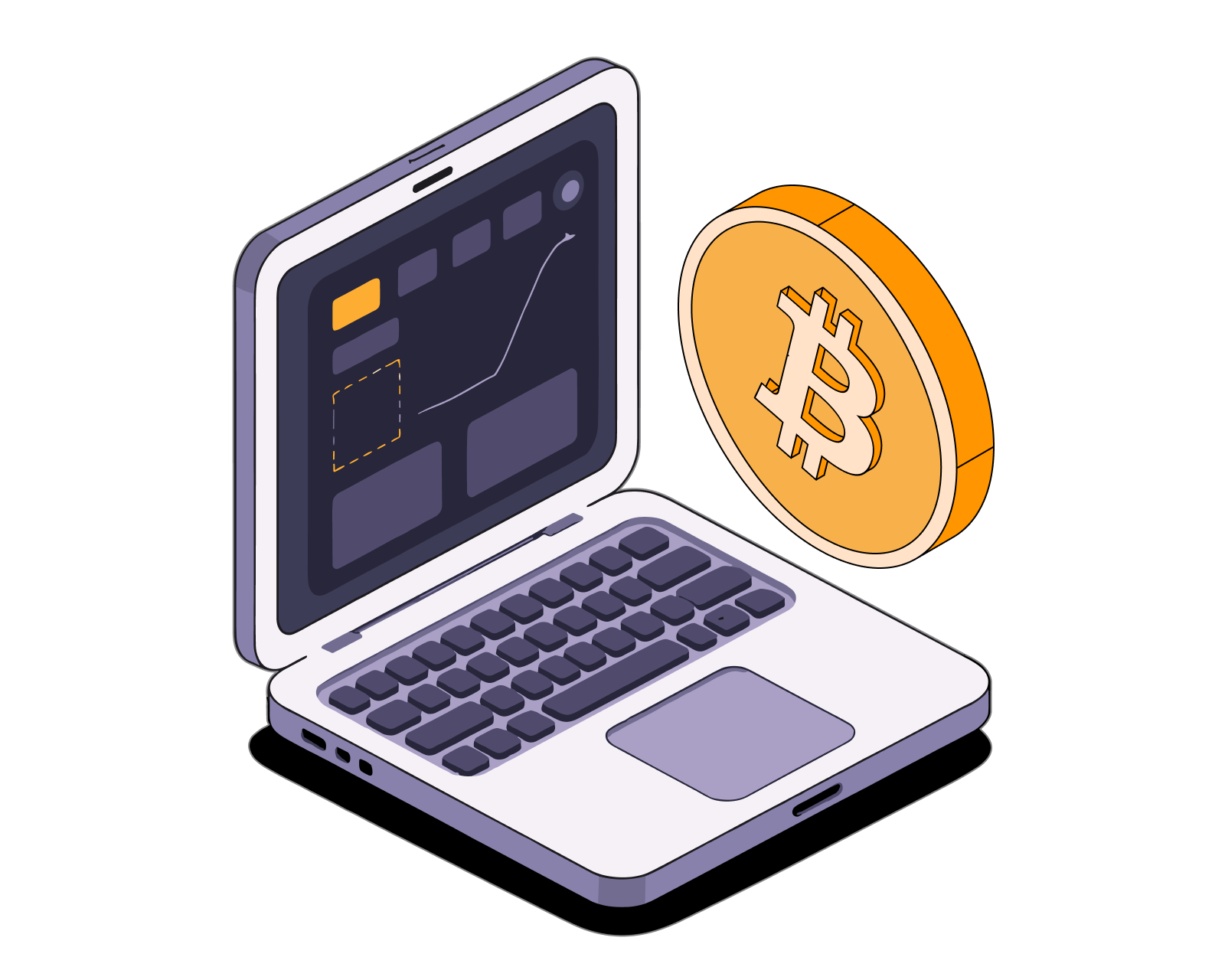
What is a CEX?
Learn about CEXs, the differences between them and DEXs, and whether they’re safe to use.
Read this article →
What is a CEX?
Learn about CEXs, the differences between them and DEXs, and whether they’re safe to use.

What is a DEX?
A decentralized exchange (DEX) is a type of exchange that specializes in peer-to-peer transactions of cryptocurrencies and digital assets. Unlike centralized exchanges (CEXs), DEXs do not require a trusted third party, or intermediary, to facilitate the exchange of cryptoassets.
Read this article →
What is a DEX?
A decentralized exchange (DEX) is a type of exchange that specializes in peer-to-peer transactions of cryptocurrencies and digital assets. Unlike centralized exchanges (CEXs), DEXs do not require a trusted third party, or intermediary, to facilitate the exchange of cryptoassets.

How does crypto exchange work?
How safe is it to store your crypto on centralized exchanges?
Read this article →
How does crypto exchange work?
How safe is it to store your crypto on centralized exchanges?

Reading Bitcoin Charts for Beginners
A beginner's guide to understanding Bitcoin charts, covering candlestick patterns, technical indicators, market analysis, and risk management.
Read this article →
Reading Bitcoin Charts for Beginners
A beginner's guide to understanding Bitcoin charts, covering candlestick patterns, technical indicators, market analysis, and risk management.

Bitcoin Trading for Beginners
A comprehensive guide to Bitcoin trading for beginners, covering wallets, exchanges, market analysis, and risk management strategies.
Read this article →
Bitcoin Trading for Beginners
A comprehensive guide to Bitcoin trading for beginners, covering wallets, exchanges, market analysis, and risk management strategies.
STAY AHEAD IN CRYPTO
Stay ahead in crypto with our weekly newsletter delivering the insights that matter most
Weekly crypto news, curated for you
Actionable insights and educational tips
Updates on products fueling economic freedom
No spam. Unsubscribe anytime.
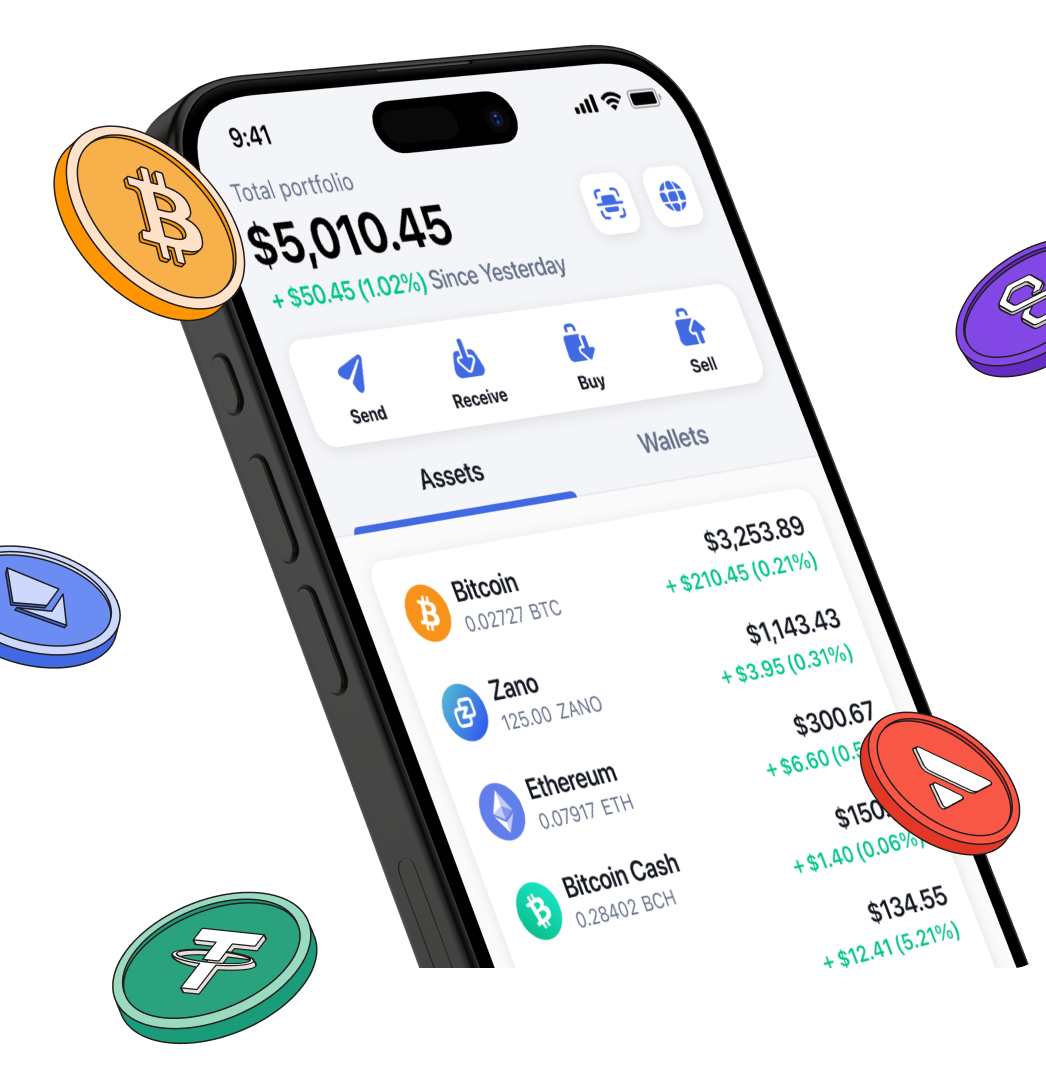
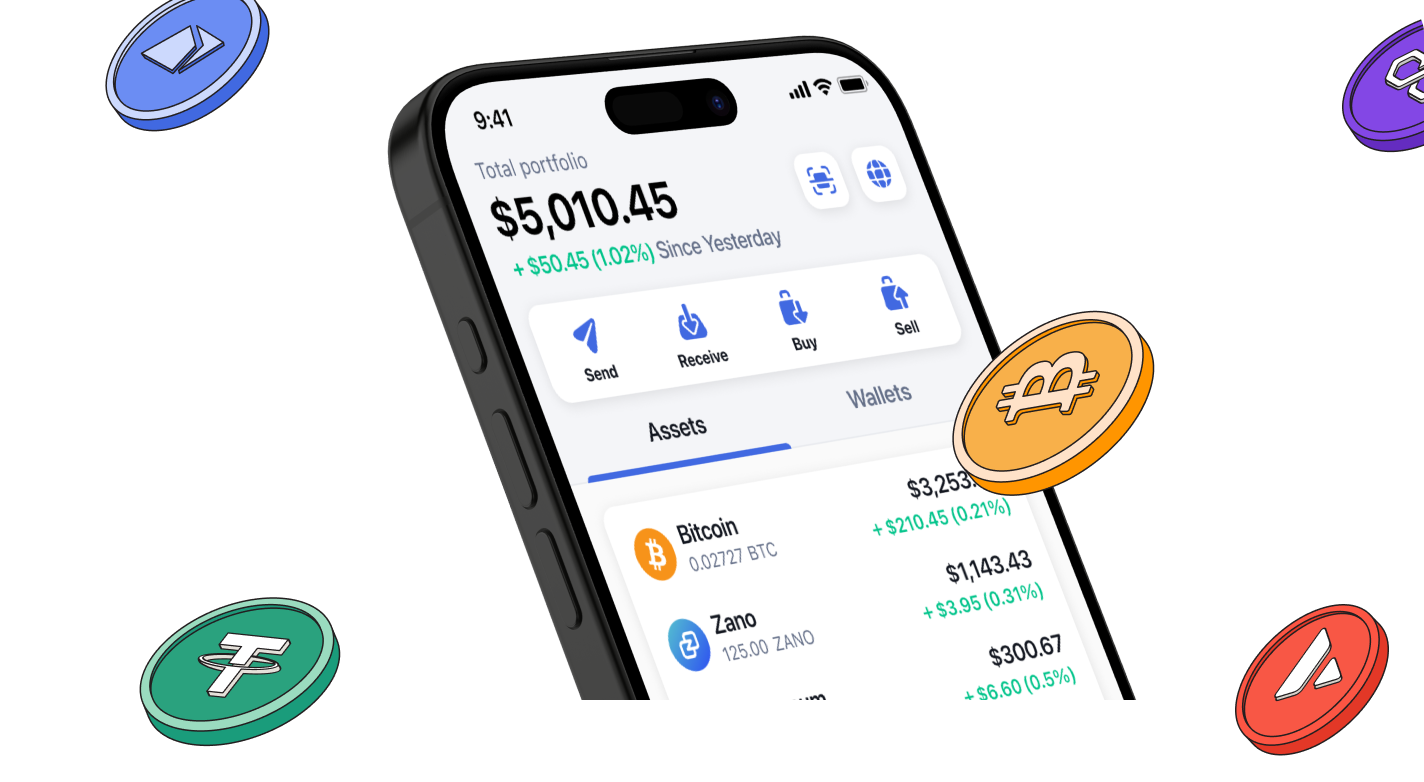
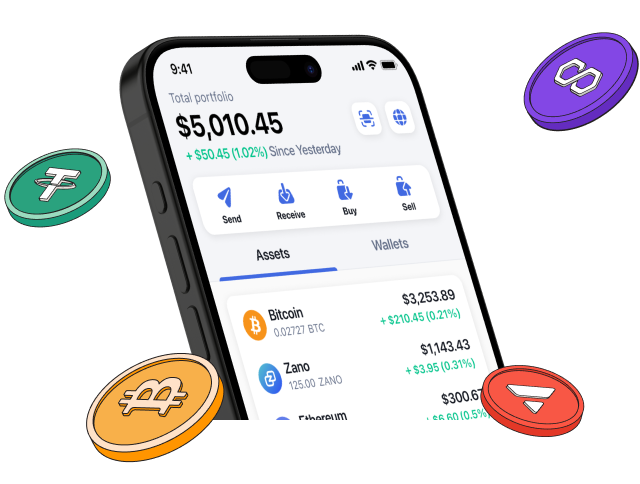
Start investing safely with the Bitcoin.com Wallet
Over wallets created so far
Everything you need to buy, sell, trade, and invest your Bitcoin and cryptocurrency securely

© 2025 Saint Bitts LLC Bitcoin.com. All rights reserved


